Several years ago I modded this WoodRiver LED Dual Power Shop Light (Item #149727, available from Woodcraft for $33) by using a severely under-driven P7 LED (200mA). But that light has not been "enough", and I knew that with a plastic head I was limited to how much current I could feed the LED.
So I decided to make my own metal head for these lamps so that I can get more use of them. I started from a solid piece of Al:
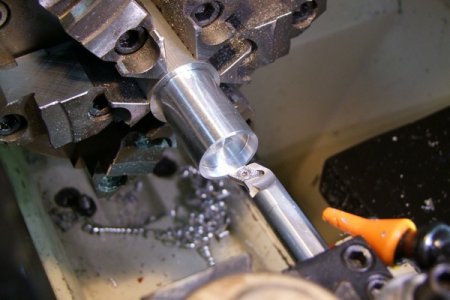
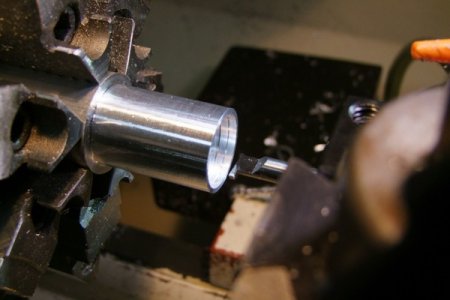
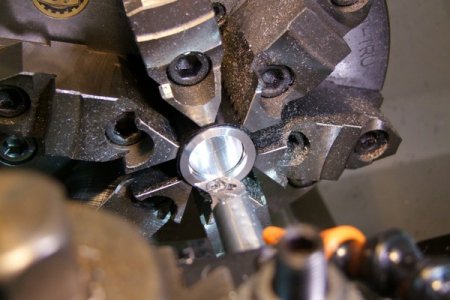
I added some cooling grooves:
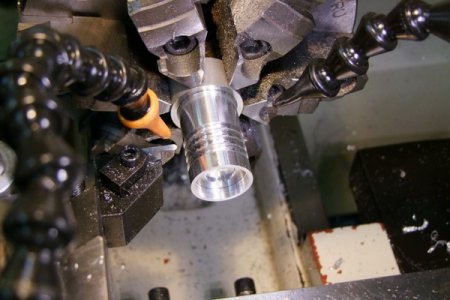
And using the Nichia 219's I made two prototypes:
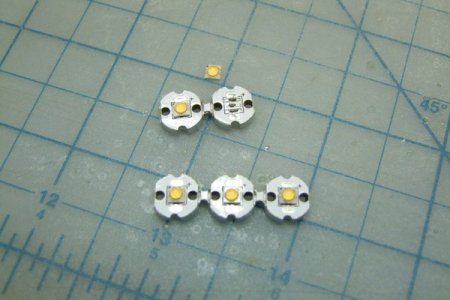
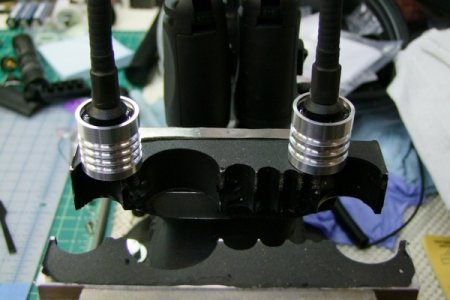
I am using a frosted narrow and a frosted wide 20mm lens - how do they work?
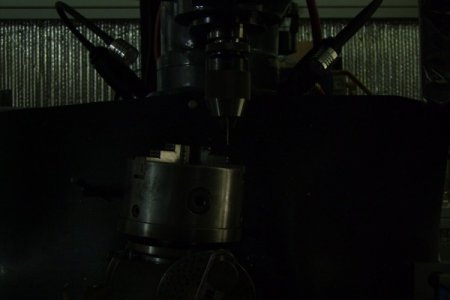
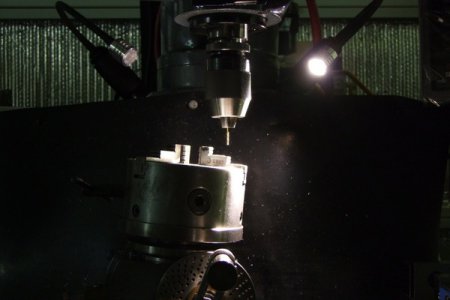
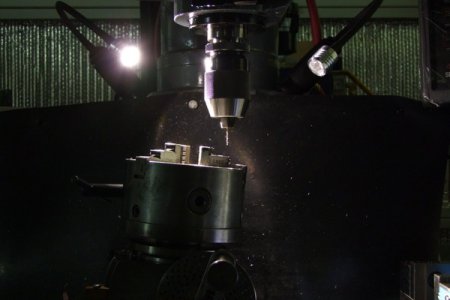
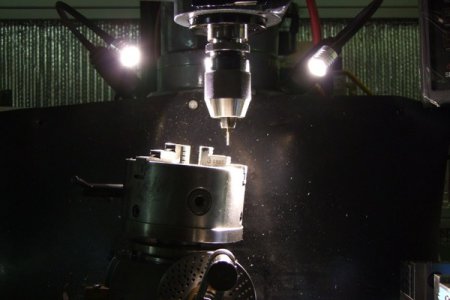
With their flexible neck I can get the light where I need it, but this time I get plenty, beautiful, 4500K 92CRI light:
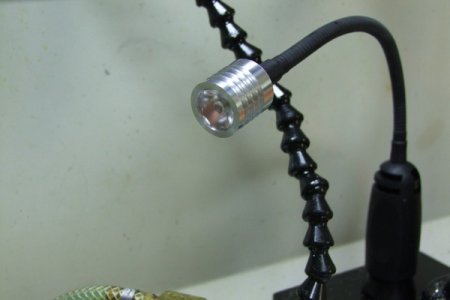
Here I am using one of them to cut more of the heads:
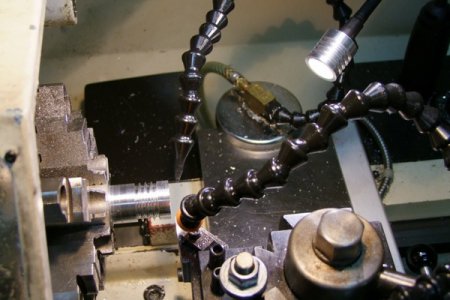
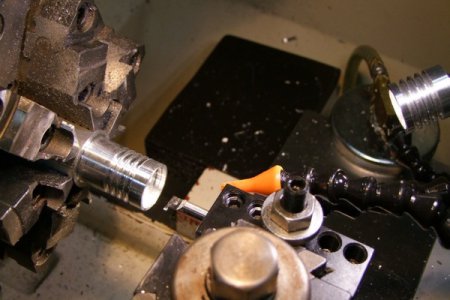
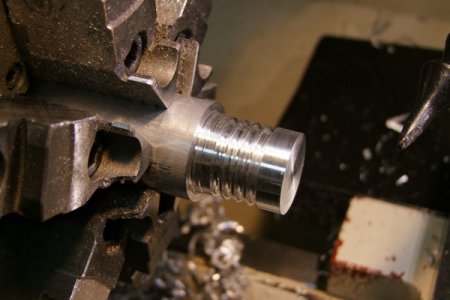
Since these work so well, I made some more for me, and a few more just in case:
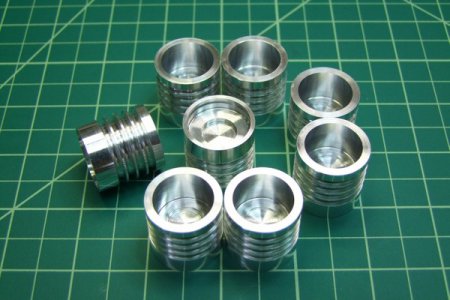
I took 4x of them, sand blasted them, and then coated them with Moly Resin semi-gloss back:
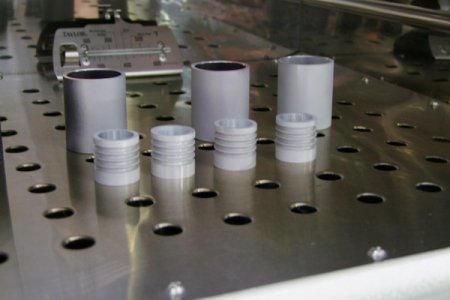
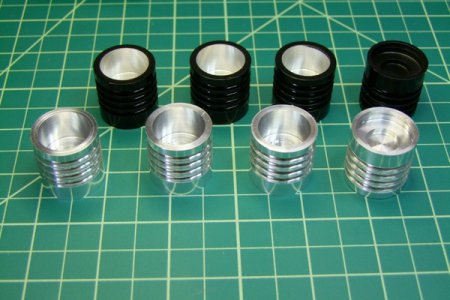
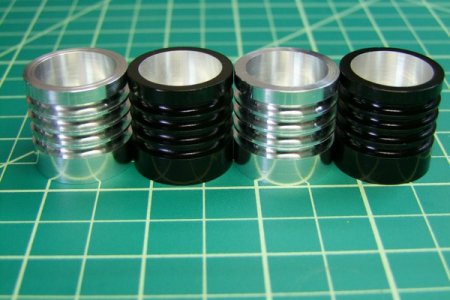
Drill holes for LED wires:
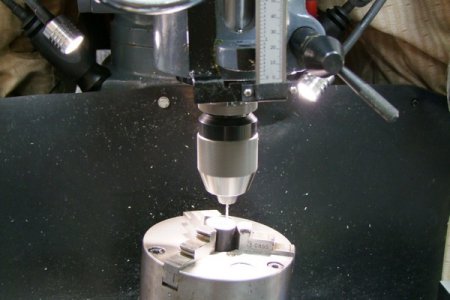
And they are all done, ready for assembly:
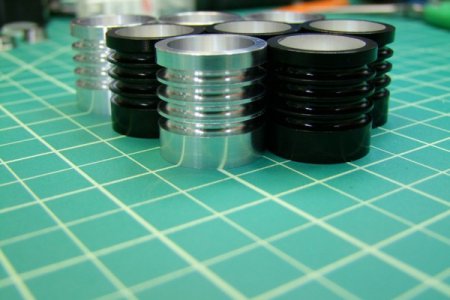
I have been using these for the last two days, and they are working great. The surface temp (via IR temp measurement) hovers between 100-110F, with an ambient temp of about 80F. So they are definitely warm to the touch, but not hot enough to burn you when re-adjusting their aim. As a point of comparison, my Electrix 35 watt incandescent gets to about 135F with the same ambient temp - you can't keep your hand on that one for long!
By the way, although I used the Nichia 219's here, I did build one LED Shop Lamp using the Cree XP-G Warm White (the Cree has a more throwy beam although both have the same narrow frosted optics). The exposure is stepped down (these are fairly bright!). Here you can see them side-by-side: the one that looks "white" is the Nichia:
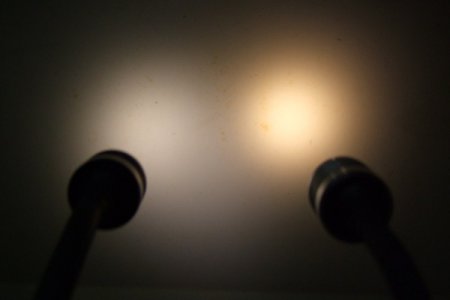
Here are the "before and after" pictures so that folks can see the dramatic improvements. Stock light on the left, upgraded light on the right - stepped down exposure so that you can see the beam, but camera on manual exposure so that you can compare the relative brightness. First the stock lamp - the beam is horrible and uneven:
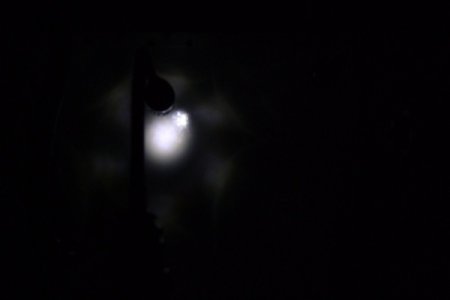
Then the upgraded lamp - much, much better beam profile, plus much brighter as well:
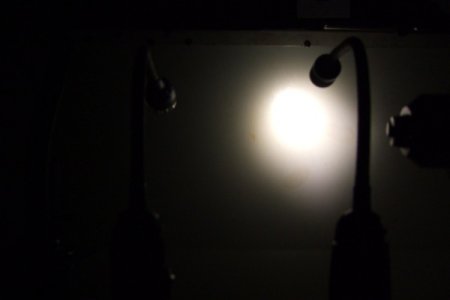
Now the lights are aimed at the chuck on my lathe. Again, camera on manual exposure. First the stock lamp:
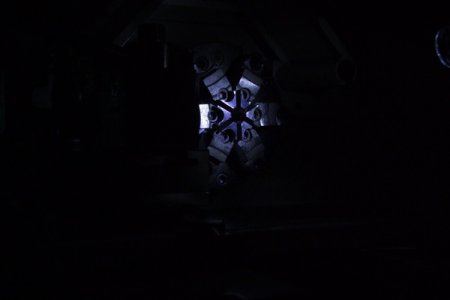
Then the upgraded lamp - again, much better coverage and much brighter:
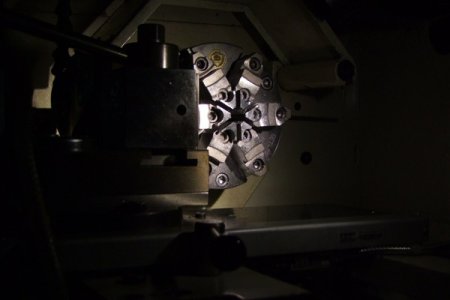
Will
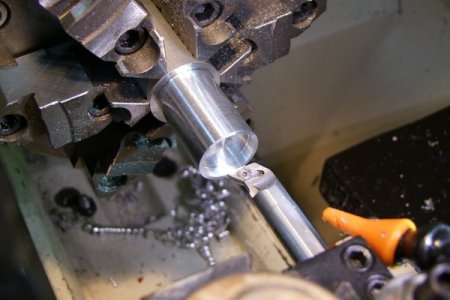
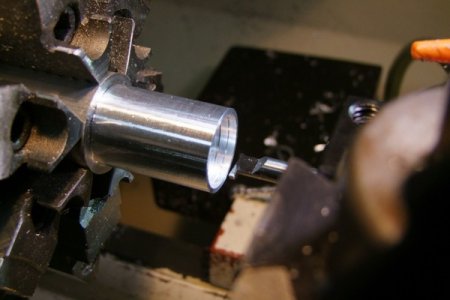
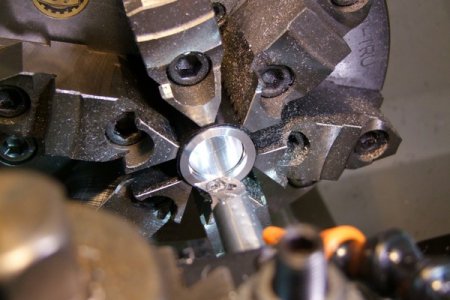
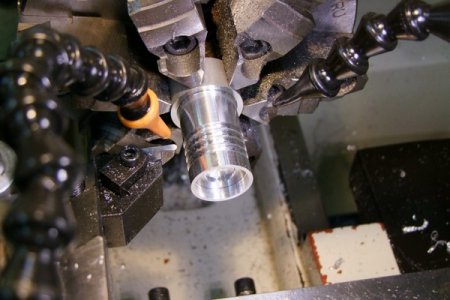
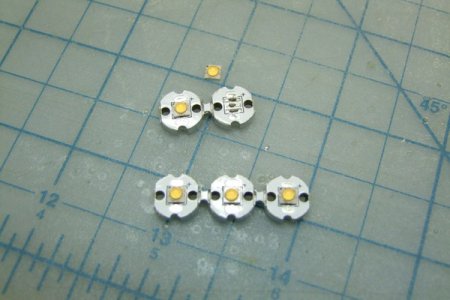
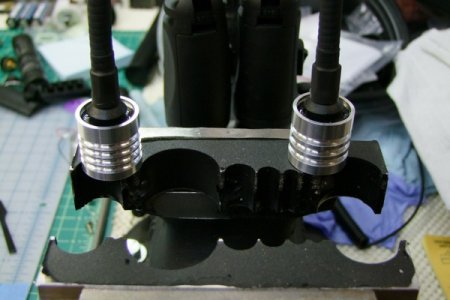
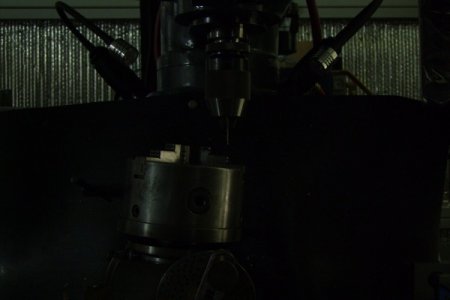
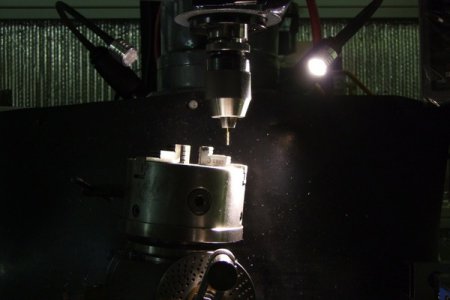
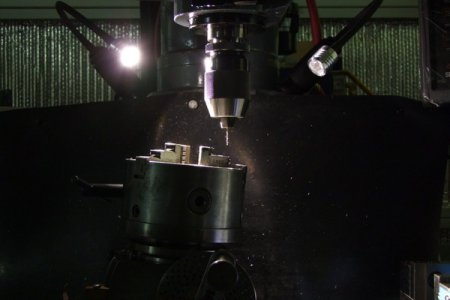
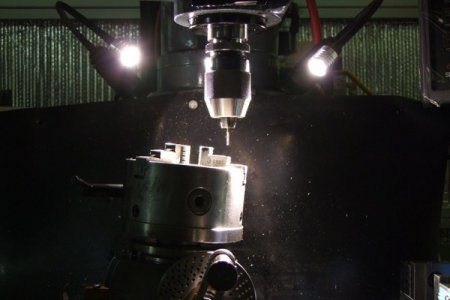
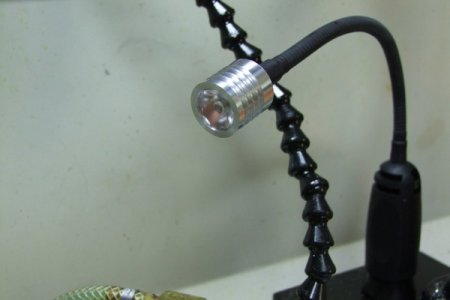
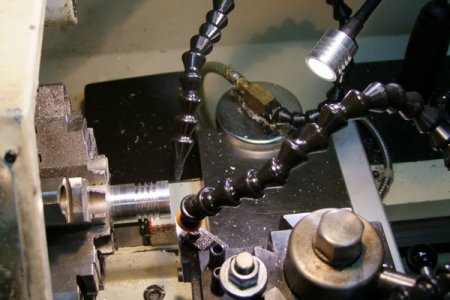
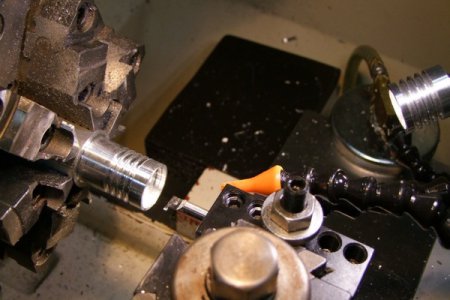
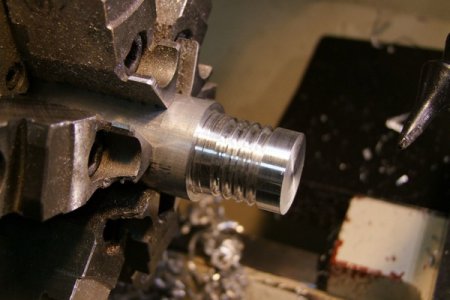
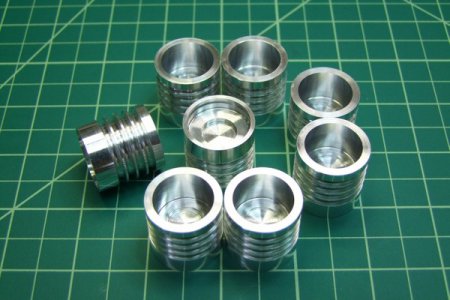
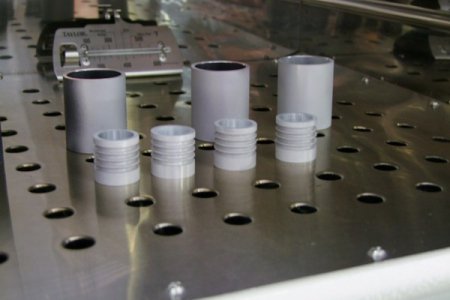
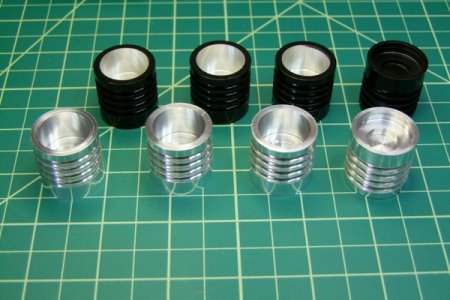
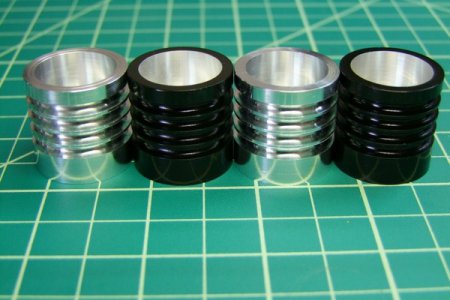
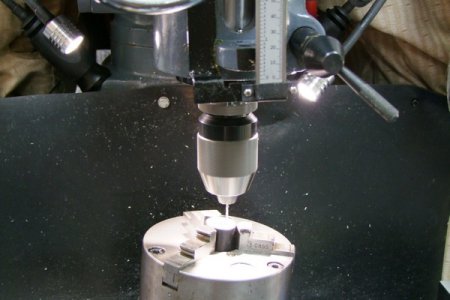
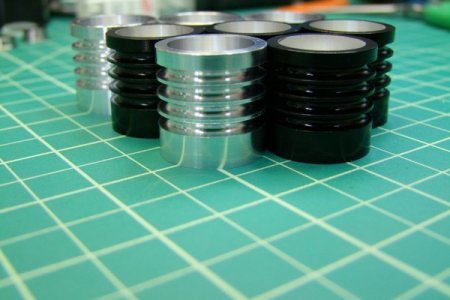
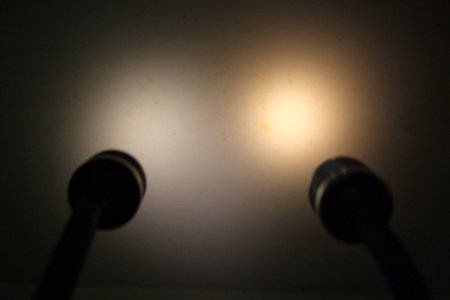
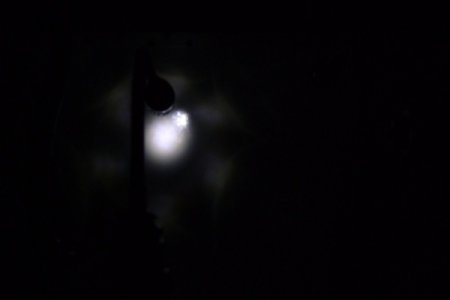
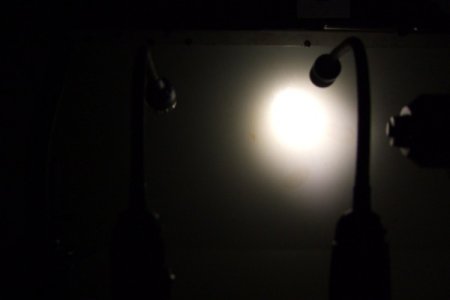
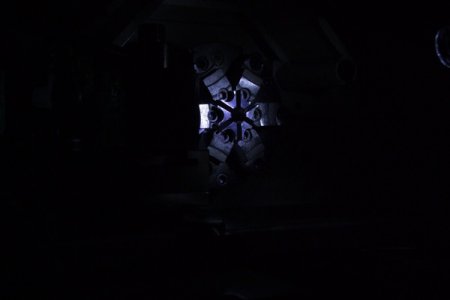
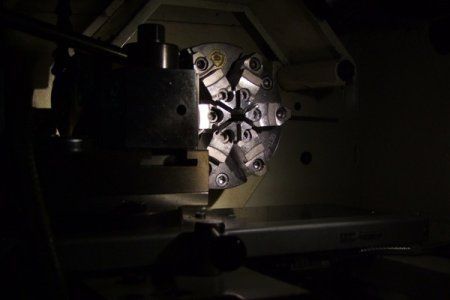
So I decided to make my own metal head for these lamps so that I can get more use of them. I started from a solid piece of Al:



I added some cooling grooves:

And using the Nichia 219's I made two prototypes:


I am using a frosted narrow and a frosted wide 20mm lens - how do they work?




With their flexible neck I can get the light where I need it, but this time I get plenty, beautiful, 4500K 92CRI light:

Here I am using one of them to cut more of the heads:



Since these work so well, I made some more for me, and a few more just in case:

I took 4x of them, sand blasted them, and then coated them with Moly Resin semi-gloss back:



Drill holes for LED wires:

And they are all done, ready for assembly:

I have been using these for the last two days, and they are working great. The surface temp (via IR temp measurement) hovers between 100-110F, with an ambient temp of about 80F. So they are definitely warm to the touch, but not hot enough to burn you when re-adjusting their aim. As a point of comparison, my Electrix 35 watt incandescent gets to about 135F with the same ambient temp - you can't keep your hand on that one for long!
By the way, although I used the Nichia 219's here, I did build one LED Shop Lamp using the Cree XP-G Warm White (the Cree has a more throwy beam although both have the same narrow frosted optics). The exposure is stepped down (these are fairly bright!). Here you can see them side-by-side: the one that looks "white" is the Nichia:

Here are the "before and after" pictures so that folks can see the dramatic improvements. Stock light on the left, upgraded light on the right - stepped down exposure so that you can see the beam, but camera on manual exposure so that you can compare the relative brightness. First the stock lamp - the beam is horrible and uneven:

Then the upgraded lamp - much, much better beam profile, plus much brighter as well:

Now the lights are aimed at the chuck on my lathe. Again, camera on manual exposure. First the stock lamp:

Then the upgraded lamp - again, much better coverage and much brighter:

Will

























